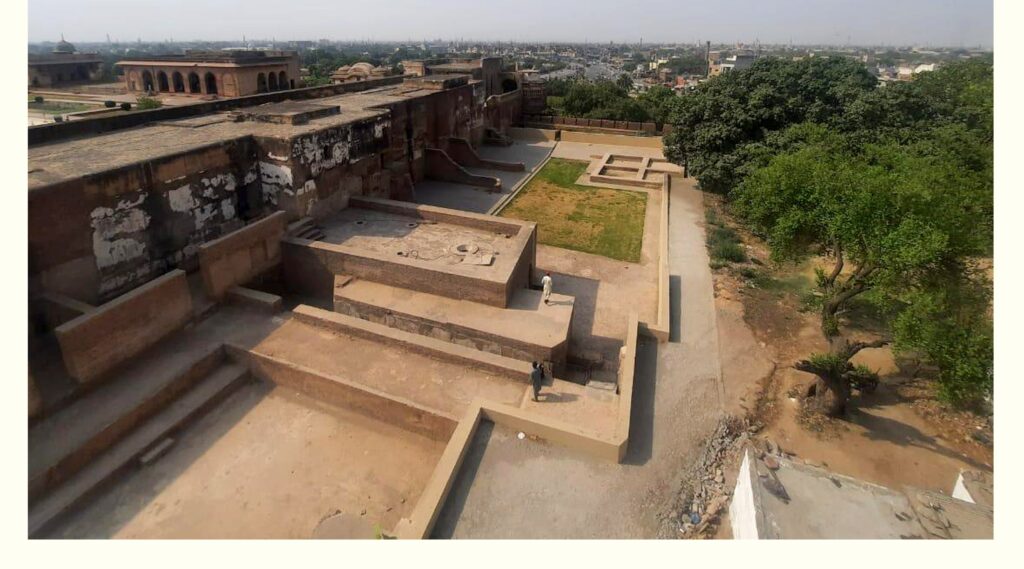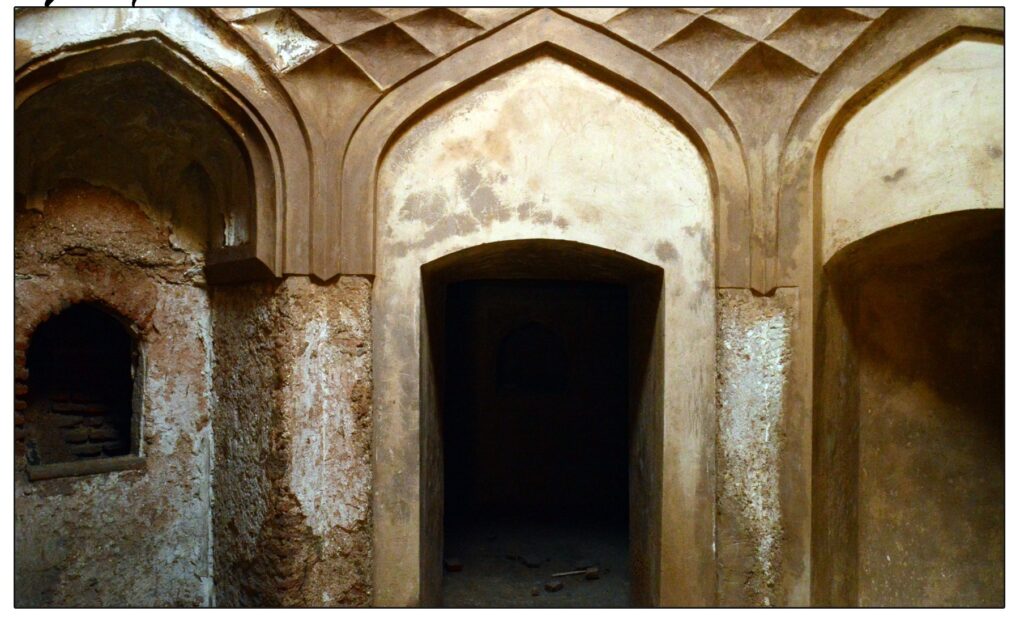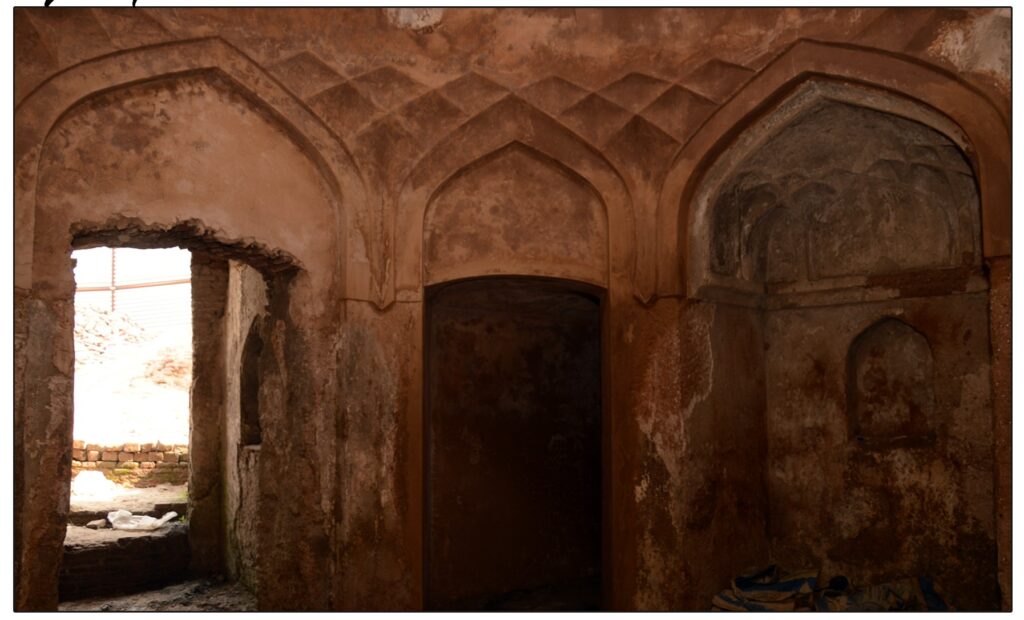A Marvel Unearthed in 2019

The Shahi Hammam, located in the backside of Jahangir’s Quadrangle at Lahore Fort, remained hidden for centuries. Once abandoned and neglected, this area had turned into a dumping ground, filled with debris and waste. Forgotten over time, this important part of Lahore’s World Heritage Site was overlooked, much like the Barood Khana and Royal Kitchens before their restoration.
A Forgotten Gem
The Walled City of Lahore Authority (WCLA) started cleaning the area a few months ago. During the removal of nearly 100,000 cubic feet of debris, workers discovered a small opening. No one knew if it was a chamber or a tunnel, but curiosity kept the team cleaning and excavating. After clearing the site, a narrow passage was revealed. Workers, equipped with torches, ventured inside the dark, eerie space—unsure of what lay ahead. What they found was astonishing—a well-preserved Shahi Hammam (Royal Bath).
Discovery of the Royal Bath
In January 2019, the team uncovered this Royal Bath, a significant discovery. Experts confirmed that it was built during the reign of Mughal Emperor Akbar when he reconstructed Lahore Fort with burnt bricks. The architectural features suggest that this bath was likely part of the Akbari Palace, whose remnants can still be found within the fort.
Akbar’s Era Architecture
This Shahi Hammam is smaller than the famous Wazir Khan Hammam at Delhi Gate or the bath near Shah Jahan’s Sleeping Chambers in the fort. The materials and style used in its construction firmly place it in Akbar’s era. The red sandstone slabs, Ghalib Kari on Kankar Lime Plaster, and grand arches all suggest Akbar’s architectural influence. The absence of frescoes, which were not common during Akbar’s reign, further supports this theory. Water and steam channels inside the bath indicate the presence of a hypocaust system, similar to the one in Wazir Khan Hammam.

A Glimpse into Mughal Life
The layout includes channels for running fresh and used water, small holes in the walls for oil lamps, and openings for chimneys. All of these features suggest a complex system of steam and water circulation, making this a sophisticated Royal Bath. The location of the bath near Akbari Gate, close to where Akbari Palace once stood, further strengthens its connection to Akbar’s era.
Damages and Later Use
Over time, the Sikh and British eras took their toll on the fort’s structures, including this bath. The British built soldier barracks over many Mughal buildings, repurposing them as residences, dispensaries, and offices. The bath likely got buried under the rising ground level, much like the Barood Khana and Wazir Khan Hammam at Delhi Gate. These historical structures were forgotten as the surrounding areas developed, with the street level rising higher than the original building floors.
Smaller but Significant
This newly discovered Shahi Hammam is smaller in size, leading experts to believe it was used exclusively by the royalty. Public baths would not have been located inside the palace complex. So far, three chambers have been revealed, and further documentation will determine the full extent of the structure. Once fully restored, this bath will be a magnificent addition to the Lahore Fort’s historic treasures.

Other Shahi Hammams in Lahore Fort
Lahore Fort also houses another Shahi Hammam, built by Shah Jahan around 1633 AD, adjacent to his Khawabgah (Sleeping Chambers). This hammam, based on Turkish style, features changing rooms and facilities for both hot and cold baths. Terracotta pipes for water supply are still visible, along with a small water tank paved with marble. The baths in this hammam were once beautifully adorned with marble, much of which has since been removed.
In Mughal times, these Royal Baths were more than just places for bathing—they were used as cabinet chambers where only the nobles were allowed to enter.
Conclusion
The 2019 discovery of the Akbar-era Shahi Hammam is a monumental find for Lahore Fort. Once restored, it will serve as yet another reminder of the grandeur and architectural prowess of the Mughal Empire. This hidden gem will soon stand proudly among the fort’s other iconic structures, drawing visitors and historians alike to experience Lahore’s rich heritage.
Written by Tania Qureshi
The writer can be reached on twitter.com/TaniaQureshi
